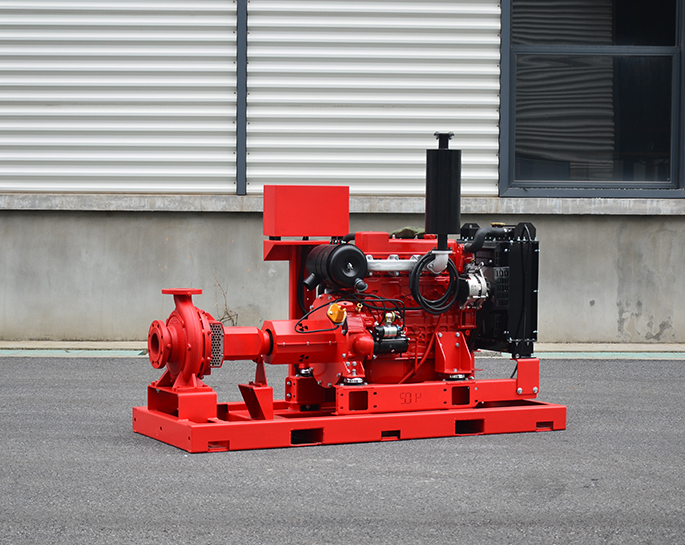What are the key considerations for ensuring the interoperability and compatibility of fire pump systems with other building systems and technologies?
Apr 18, 2024
Share:
Ensuring the interoperability and compatibility of fire pump systems with other building systems and technologies is crucial for the overall efficiency and effectiveness of fire safety measures. Here are key considerations:
1. **Standard Compliance**: Ensure that fire pump systems comply with relevant industry standards and codes, such as those set by the National Fire Protection Association (NFPA) or local building codes. These standards often include requirements for compatibility with other building systems.
2. **Communication Protocols**: Choose fire pump systems that support commonly used communication protocols, such as BACnet, Modbus, or LonWorks, to facilitate integration with building automation systems (BAS) and other control systems. This allows for centralized monitoring, control, and coordination of fire safety measures.
3. **Interface Compatibility**: Ensure that fire pump systems have compatible interfaces and connectors to integrate with fire alarm systems, sprinkler systems, emergency lighting, and other fire protection devices. Compatibility ensures seamless communication and coordination during emergencies.
4. **Power Requirements**: Coordinate with electrical engineers to ensure that the electrical power requirements of the fire pump system align with the building's electrical infrastructure. This includes considerations for voltage, phase, and capacity to prevent compatibility issues and power failures during emergencies.
5. **Physical Space and Installation**: Consider the physical space requirements and installation considerations of fire pump systems to ensure compatibility with existing building layout and infrastructure. Adequate space, accessibility, and proper mounting provisions should be accounted for during design and installation.
6. **Integration Testing**: Conduct thorough integration testing to verify the interoperability of fire pump systems with other building systems and technologies. Test communication pathways, data exchange protocols, and system responses to ensure seamless operation during normal conditions and emergencies.
7. **Documentation and Training**: Maintain comprehensive documentation detailing the integration setup, system configurations, and operating procedures for fire pump systems and other interconnected building systems. Provide training to facility personnel and emergency responders to ensure they understand how to effectively utilize and troubleshoot the integrated systems.
8. **Scalability and Future Expansion**: Design fire pump systems with scalability in mind to accommodate future expansion or upgrades of building systems. Choose modular and flexible solutions that can easily integrate with new technologies and functionalities as building requirements evolve over time.
By addressing these key considerations, building owners and designers can ensure that fire pump systems seamlessly integrate with other building systems and technologies, enhancing overall fire safety and emergency response capabilities.

1. **Standard Compliance**: Ensure that fire pump systems comply with relevant industry standards and codes, such as those set by the National Fire Protection Association (NFPA) or local building codes. These standards often include requirements for compatibility with other building systems.
2. **Communication Protocols**: Choose fire pump systems that support commonly used communication protocols, such as BACnet, Modbus, or LonWorks, to facilitate integration with building automation systems (BAS) and other control systems. This allows for centralized monitoring, control, and coordination of fire safety measures.
3. **Interface Compatibility**: Ensure that fire pump systems have compatible interfaces and connectors to integrate with fire alarm systems, sprinkler systems, emergency lighting, and other fire protection devices. Compatibility ensures seamless communication and coordination during emergencies.
4. **Power Requirements**: Coordinate with electrical engineers to ensure that the electrical power requirements of the fire pump system align with the building's electrical infrastructure. This includes considerations for voltage, phase, and capacity to prevent compatibility issues and power failures during emergencies.
5. **Physical Space and Installation**: Consider the physical space requirements and installation considerations of fire pump systems to ensure compatibility with existing building layout and infrastructure. Adequate space, accessibility, and proper mounting provisions should be accounted for during design and installation.
6. **Integration Testing**: Conduct thorough integration testing to verify the interoperability of fire pump systems with other building systems and technologies. Test communication pathways, data exchange protocols, and system responses to ensure seamless operation during normal conditions and emergencies.
7. **Documentation and Training**: Maintain comprehensive documentation detailing the integration setup, system configurations, and operating procedures for fire pump systems and other interconnected building systems. Provide training to facility personnel and emergency responders to ensure they understand how to effectively utilize and troubleshoot the integrated systems.
8. **Scalability and Future Expansion**: Design fire pump systems with scalability in mind to accommodate future expansion or upgrades of building systems. Choose modular and flexible solutions that can easily integrate with new technologies and functionalities as building requirements evolve over time.
By addressing these key considerations, building owners and designers can ensure that fire pump systems seamlessly integrate with other building systems and technologies, enhancing overall fire safety and emergency response capabilities.


.png)
.png)

.png)


